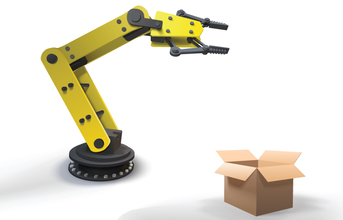
He further explains it with an example. In a typical manufacturing set up of automotive industry, cars of different variants and models are made on the same assembly line and are produced in a mixed manner. Hence it's extremely important that the parts of these variants are fitted in the correct model. For instance, in a diesel car it is extremely important to ensure that the engine, equipment and the tags for diesel are fitted properly. So is the
case with the petrol version.
Centum's Mallavarapu says that by having the medium scaled blocks of processes which are likely to be common for most of the products across segments it is possible to design, deploy and execute configurable production lines to suit the needs of the product. This also saves NPI time which helps customer to time the market and plan strategies.
But he also points out that even though industrial automation brings in control of variability of processes, at Centum this is much more involved
activity than it can be visualized. The reason? "In any high reliability products, substitution of any legacy process including introduced automation
goes through the rigor of "Qualification" which ensures the Quality and reliability requirements are met while other aspects of need for automation will be part of the due diligence activity that will be the carried out at the beginning of the automation initiative."
According to Bhangale, this depends on type of automation selected. "In case the automation is designed considering the flexibility requirement; the changes are possible to do quickly, efficiently and cost-effectively. In our factory while designing the tank welding automation we have kept the provision of flexibility and improvements, which allows very fast and easy change over, just by selecting the program."
Nerurkar believes that businesses need proper application systems to control and monitor instruments. The use of PLCs has revolutionised the manufacturing segment. Assimilation and classification of collected data is one of the benefits of PLC which is further supplemented by SCADA (Supervisory control and Data acquisition) which manages data collected. Together, PLC and SCADA control and monitor the infrastructure and facility based process of businesses and provide real time information on the condition of equipment. With use of automation, machining centers have transformed into versatile production machines where selecting proper tools, fixtures and attachments, user can produce variety of parts in small or large
batches with required quality and predictable output."
Way ahead
Godrej Appliances' Shariyarr underlines believes that larger and complex automations like integrated manufacturing lines should address all aspects of operational excellence such as productivity, quality, capacity enhancement, reduction in cost of operations, enhancement in safety levels and should have zero impact on the environment. Such investments will add overall value to all stakeholders and give a faster payback. "Thus, a systematic scrutinizing approach is necessary through which the low cost automations or larger complex ones involving huge capital investments can be distinguished and will keep delivering the results that they are established for."
(Continued on next page)


























